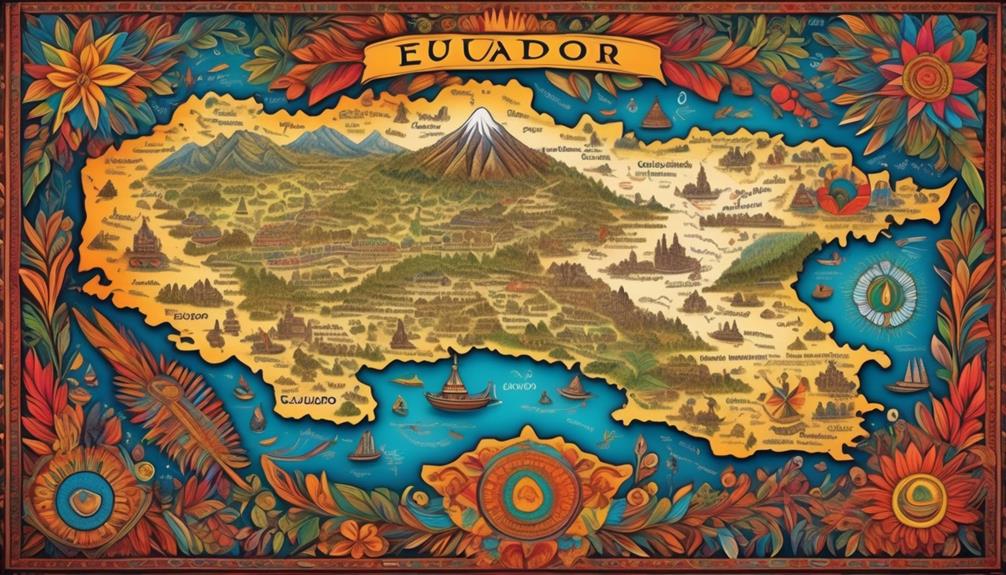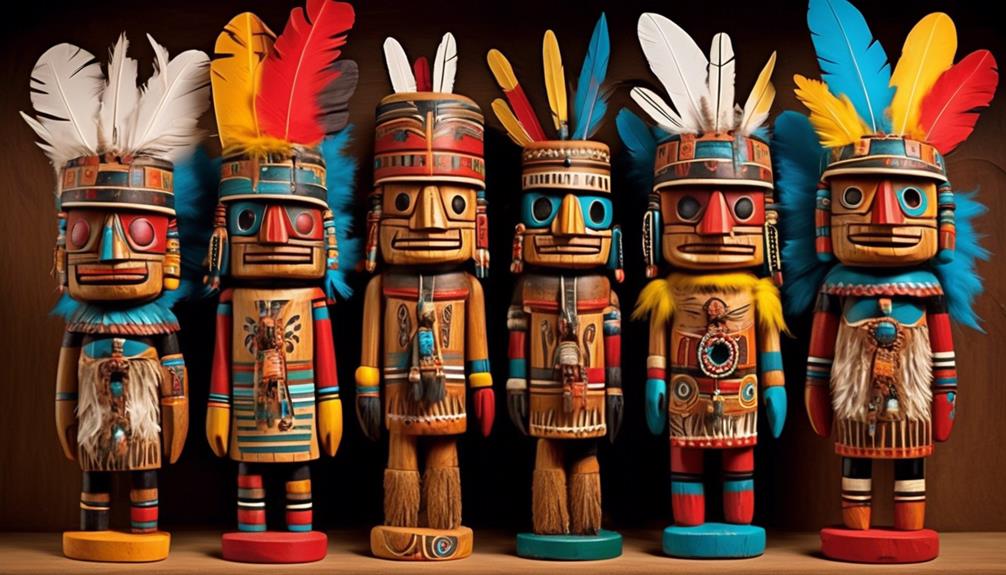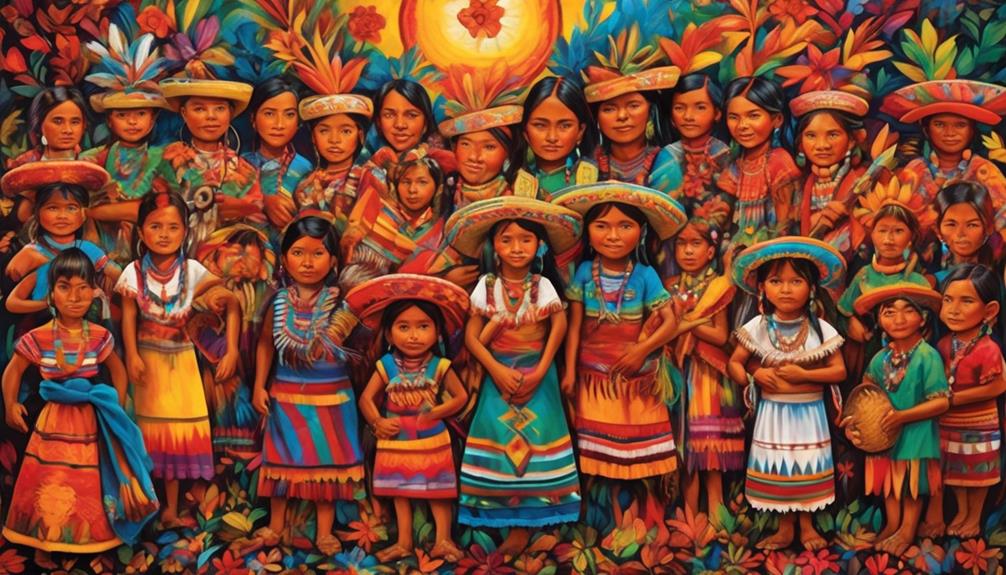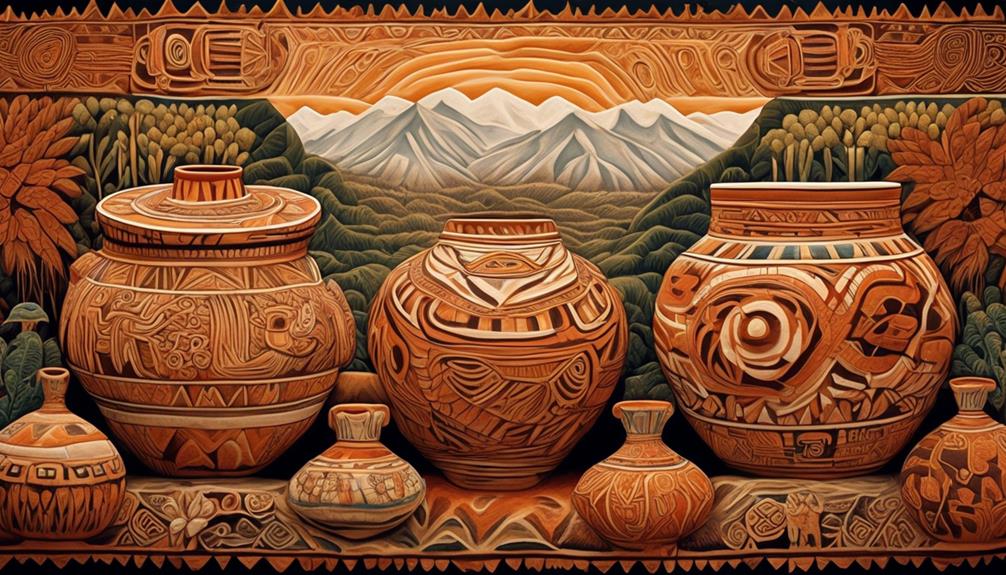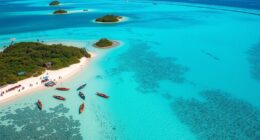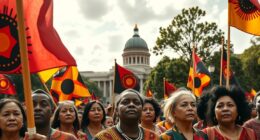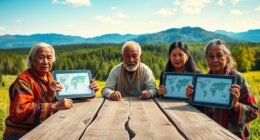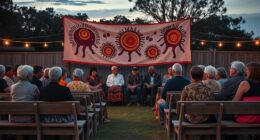When we consider Ecuador, we typically think of its stunning natural environments and varied animal species. Yet beneath these superficial impressions is a vibrant mosaic of indigenous tribes who have inhabited this land for generations.
Just how many of these tribes exist in Ecuador today? The answer may surprise you, as the complexity and diversity of these indigenous communities are often overlooked.
Join us as we uncover the unique cultural heritage and traditions of the indigenous tribes in Ecuador, shedding light on their resilience and the challenges they face in the modern world.
Key Takeaways
- There are over 25 distinct indigenous tribes in Ecuador, each with its own unique language, clothing, art, and rituals.
- The majority of indigenous tribes in Ecuador are concentrated in the Amazon region, Andean highlands, and coastal areas.
- Indigenous communities in Ecuador face challenges such as economic marginalization, lack of access to healthcare and education, and land rights issues.
- Efforts to preserve and protect indigenous tribes in Ecuador involve respecting and protecting their traditional knowledge, collaborating with local communities, securing ancestral lands, and ensuring indigenous autonomy and control over territories.
Historical Overview of Indigenous Tribes in Ecuador
The historical development of indigenous tribes in Ecuador has been shaped by centuries of cultural and societal evolution, deeply intertwined with the country's rich and complex history. The diverse landscape of Ecuador has fostered a multitude of indigenous languages, with over 25 distinct languages spoken across the region. Each language represents a unique cultural identity, reflecting the rich tapestry of indigenous traditions and beliefs.
Traditional practices are deeply rooted in the daily lives of Ecuador's indigenous tribes. From agricultural techniques passed down through generations to intricate artisanal crafts, these traditions are a testament to the resilience and ingenuity of indigenous communities. The preservation of traditional practices is a vital aspect of sustaining the cultural heritage of Ecuador's indigenous tribes, serving as a link to their ancestral roots amidst a rapidly changing world.
Over time, the historical trajectory of indigenous tribes in Ecuador has been marked by both adversity and resilience. Despite the challenges they've faced, the indigenous communities have persevered, maintaining their languages, traditions, and unique way of life. Understanding the historical context of these tribes provides valuable insight into the rich cultural tapestry that defines Ecuador today.
Demographics and Distribution of Indigenous Tribes
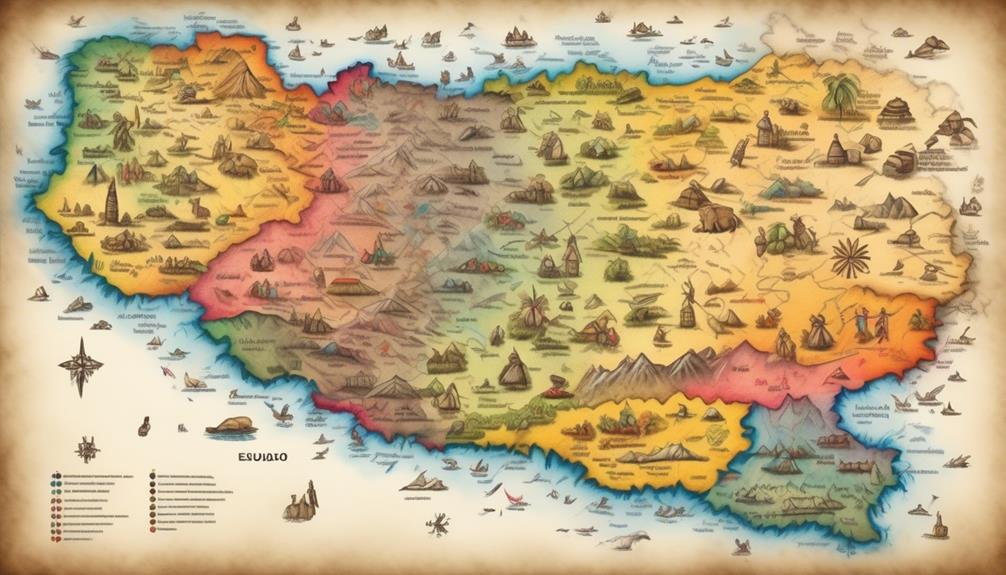
The historical overview of indigenous tribes in Ecuador reveals the rich tapestry of cultural traditions and beliefs, laying the foundation for understanding the current demographics and distribution of these unique communities across the country.
- Demographic Trends:
The demographic trends of indigenous tribes in Ecuador depict a growing population, with a significant proportion residing in rural areas. This demographic growth is attributed to factors such as improved healthcare, education, and preservation of cultural identity.
- Geographical Distribution:
The geographical distribution of indigenous tribes in Ecuador is diverse, with the majority concentrated in the Amazon region, Andean highlands, and the coastal areas. Each region showcases distinct cultural practices and traditions, influenced by their unique environments.
Understanding the demographic trends and geographical distribution of indigenous tribes in Ecuador is crucial for implementing policies that respect and support their traditional way of life. It also provides insights into the challenges and opportunities these communities face in the modern world, allowing for informed decision-making and sustainable development initiatives.
Cultural Diversity and Traditions of Indigenous Tribes
Exploring the cultural diversity and traditions of indigenous tribes in Ecuador reveals a rich tapestry of customs and beliefs that shape their way of life. These tribes are known for their remarkable cultural preservation, holding onto traditional practices that have been passed down through generations. Each indigenous group has its own distinct language, clothing, art, and rituals, contributing to the vibrant cultural mosaic of Ecuador.
The Waorani, for example, are renowned for their intricate knowledge of the Amazon rainforest and their traditional hunting and gathering techniques. Meanwhile, the Kichwa people have a deep connection to the land and maintain traditional agricultural practices that have sustained their communities for centuries. The Shuar are known for their intricate metalwork and the unique practice of head shrinking, a tradition deeply rooted in their spiritual beliefs.
These indigenous tribes have managed to preserve their cultural identities in the face of modernization, and their traditional practices continue to play a vital role in shaping their way of life. As we delve into the cultural diversity and traditions of these indigenous tribes, it becomes apparent that their rich heritage is an integral part of Ecuador's cultural tapestry.
Challenges Faced by Indigenous Tribes in Ecuador
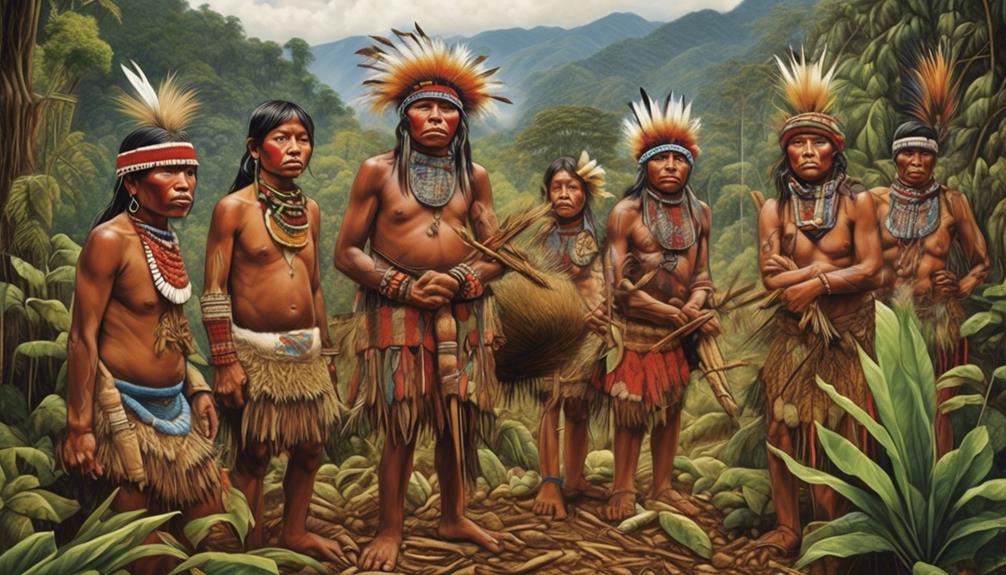
Despite their remarkable cultural preservation, indigenous tribes in Ecuador face significant challenges that threaten the continuation of their traditional practices and way of life.
- Economic Marginalization:
Many indigenous communities in Ecuador experience economic marginalization, often lacking access to adequate healthcare, education, and job opportunities. This hinders their ability to sustain themselves and their cultural practices, forcing some to abandon their traditional way of life in search of better economic prospects.
- Land Rights:
Land rights are a crucial issue for indigenous tribes in Ecuador. Historically, many communities have faced land encroachments and forced displacement, leading to the loss of their ancestral territories. Without secure land rights, indigenous tribes struggle to maintain their traditional agricultural practices, preserve their natural resources, and sustain their cultural identity.
These challenges not only threaten the cultural heritage of indigenous tribes in Ecuador but also undermine their overall well-being and autonomy.
Efforts to address economic marginalization and secure land rights are essential for ensuring the continued existence and prosperity of these diverse and invaluable communities.
Efforts to Preserve and Protect Indigenous Tribes
Efforts to preserve and protect indigenous tribes in Ecuador involve collaborating with local communities to develop sustainable strategies for safeguarding their cultural heritage and securing their rights to ancestral lands. Preservation efforts are focused on respecting and protecting the traditional knowledge, customs, and languages of the indigenous tribes. Additionally, there are ongoing initiatives to ensure that indigenous communities have secure land rights, allowing them to maintain their traditional ways of life and have control over their territories. These efforts are crucial for the long-term well-being and autonomy of indigenous peoples in Ecuador.
| Preservation Efforts | Land Rights |
|---|---|
| Respect for traditional knowledge, customs, and languages | Securing ancestral lands and territories |
| Collaborating with local communities | Ensuring indigenous autonomy |
| Sustainable strategies for safeguarding cultural heritage | Maintaining traditional ways of life |
| Protecting indigenous rights | Control over indigenous territories |
These efforts reflect a commitment to honoring the rights and preserving the cultural identities of indigenous tribes, while also promoting sustainable development and environmental conservation.
Frequently Asked Questions
What Are the Traditional Healing Practices Used by Indigenous Tribes in Ecuador?
We've researched the traditional healing practices used by indigenous tribes in Ecuador.
Traditional medicine in these communities often involves a combination of plant-based remedies, spiritual healing practices, and rituals passed down through generations.
Herbalists and shamans play a vital role, using their knowledge to address physical and spiritual ailments.
These practices are deeply ingrained in the cultural fabric, reflecting a holistic approach to health and well-being.
How Do Indigenous Tribes in Ecuador Govern Themselves and Make Decisions?
In indigenous tribes in Ecuador, tribal governance and decision making are based on leadership roles and community consensus. Each tribe has its own unique system, often involving a council of elders or leaders who make decisions for the community.
Leadership roles are often earned through wisdom and experience, and decisions are made through open dialogue and consensus-building processes. This ensures that the entire community is involved in the decision-making process and that everyone's voice is heard.
What Are the Major Economic Activities of Indigenous Tribes in Ecuador?
Economic sustainability and cultural preservation are vital for indigenous tribes in Ecuador. Our communities engage in various economic activities, including agriculture, handicrafts, and ecotourism.
These activities not only provide income but also help preserve our traditions and environment. By balancing modern economic practices with traditional values, we strive to ensure the prosperity of our people while safeguarding our cultural heritage for future generations.
How Do Indigenous Tribes in Ecuador View Their Relationship With the Natural Environment?
We see Indigenous environmentalism in Ecuador as a profound connection to the land. Sustainability practices are deeply ingrained in their culture, honoring the natural world as a source of life.
The tribes view their relationship with the environment as reciprocal, emphasizing stewardship and balance. Their traditions and rituals reflect a harmonious coexistence with nature, preserving biodiversity and ecosystems.
It's a philosophy that inspires reverence and responsibility, shaping their daily lives and decision-making.
What Are Some Lesser-Known Indigenous Tribes in Ecuador and Their Unique Cultural Practices?
We will delve into the unique traditions, cultural rituals, indigenous crafts, and ritual ceremonies of some of the lesser-known indigenous tribes in Ecuador.
These tribes have preserved their distinct cultural practices, which include intricate weaving techniques, colorful traditional clothing, and ceremonial dances.
Their spiritual connection to nature is reflected in their rituals and ceremonies, demonstrating a deep reverence for the natural environment.
Conclusion
In conclusion, the cultural diversity and traditions of the indigenous tribes in Ecuador are a cherished part of the country's heritage. Despite the challenges they face, efforts to preserve and protect these tribes are ongoing.
The demographics and distribution of these tribes showcase their resilience and perseverance. It's imperative to recognize and respect the historical overview and unique challenges they encounter.
